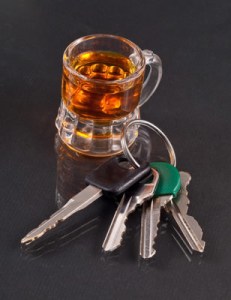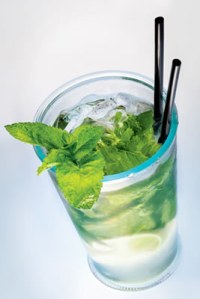 Every 30 minutes someone dies in an alcohol-related crash. And, did you know? Alcohol is a factor in 6% of all traffic crashes, and over 40% of all fatal crashes (National Safety Council). These are startling facts that one cannot simply ignore. Drunk driving is one of the most dangerous activities someone can engage in. It’s also 100% preventable.
Every 30 minutes someone dies in an alcohol-related crash. And, did you know? Alcohol is a factor in 6% of all traffic crashes, and over 40% of all fatal crashes (National Safety Council). These are startling facts that one cannot simply ignore. Drunk driving is one of the most dangerous activities someone can engage in. It’s also 100% preventable.
An alcoholic beverage service professional has a legal and moral responsibility to serve alcohol responsibly, keep a close eye on imbibing patrons, and promote an alternative means of getting home if anyone appears too drunk to drive. One should make sure guests can make it home safely without injuring themselves or others.
Remember, drunk driving is always dangerous, and not just to the driver. Pedestrians, passengers and others on the road can all become victims. Recently in the early morning hours on April 28th, a woman was killed when she was hit by a suspected drunk driver on the Las Vegas Strip (Las Vegas Sun). This is another terrible reminder of the dangers of getting behind the wheel after having too much to drink.
Some people are able to ignore the facts. But remember, a victim of a drunk driver is someone’s sister, brother, mother, father, friend, coworker, etc. The Transport Accident Commission in Australia created an incredible PSA on the dangers of drunk driving which can be viewed here. This is a graphic video, but one of the most powerful PSAs we’ve ever seen at TAM® of Nevada. This video is certain to hit close to home for some, and sharing with others will help spread the message that drunk driving is never the answer.
There are a few things you can do to support and promote this message with your patrons.
- Complete your alcohol awareness course with TAM® of Nevada to learn about responsible beverage service. Course highlights include identifying false identification, clinical effects of alcohol, laws, rules and regulations, customer disturbances and service guidelines.
- Become familiar with sober driving services available in southern Nevada. Keep the number to a reliable cab company and any other sober driver services at your bar so that you can make the call whenever necessary. Companies like Designated Drivers, Inc. provide a responsible alternative to driving while impaired. A driver will be dispatched to take your patron home in their own vehicle, no worrying about retrieving their car after they sober up.
- If a group of guests is at your establishment and an individual within the group is becoming intoxicated, check with a sober member of their group to make sure that they have a plan to get the intoxicated individual home safely. If there is no designated driver assigned, offer to call a cab or sober driver service.
- Familiarize yourself with company policies when it comes to intoxicated patrons and suspected drunk drivers. Alert your manager or supervisor if you need to cut someone off, if you need them to intervene in the situation, or if you have any concerns about a guest’s safety.
- If you have a friend or family member that you worry may have a drinking problem, and may be at risk to drive drunk, do what you can to get them the help they need. Refer to our blog post “April is Alcohol Awareness Month” for tips on how to recognize a drinking problem, and how to help.
Drunk driving is a serious problem that can affect so many. What tips would you give someone else to help prevent intoxicated individuals from getting behind the wheel of a car?
Resources
Drunk Driving – National Safety Council
Woman, 28, accused of DUI after collision kills pedestrian on Las Vegas Strip – Las Vegas Sun
© 2011 National Hospitality Institute®, TAM® of Nevada

 People have been mixing drinks to suit their tastes for centuries. In fact, many of the most popular and well known drinks requested by bar patrons today were first created by bartenders decades ago. Ever wonder about the history behind these classic cocktails? Being able to explain the origin of a mixed drink makes for great conversation with your patrons. The origin of many popular cocktails remains elusive, often with multiple sources claiming credit. Others can be traced back to a particular mixologist or bar. While several cocktails have more stories about their origins than ingredients in the actual drink, here are a few we can help pinpoint for you:
People have been mixing drinks to suit their tastes for centuries. In fact, many of the most popular and well known drinks requested by bar patrons today were first created by bartenders decades ago. Ever wonder about the history behind these classic cocktails? Being able to explain the origin of a mixed drink makes for great conversation with your patrons. The origin of many popular cocktails remains elusive, often with multiple sources claiming credit. Others can be traced back to a particular mixologist or bar. While several cocktails have more stories about their origins than ingredients in the actual drink, here are a few we can help pinpoint for you: The ban on caffeinated alcoholic beverages, also called alcopop, was one of the biggest stories in the beverage service and sales industry in 2010. Popular beverages such as Four Loko were called dangerous, a binge in a can, and worse. Last November the Food and Drug Administration declared alcoholic energy drinks to be a public health concern. The FDA concluded that caffeine added to malt alcoholic beverages was an unsafe food additive (
The ban on caffeinated alcoholic beverages, also called alcopop, was one of the biggest stories in the beverage service and sales industry in 2010. Popular beverages such as Four Loko were called dangerous, a binge in a can, and worse. Last November the Food and Drug Administration declared alcoholic energy drinks to be a public health concern. The FDA concluded that caffeine added to malt alcoholic beverages was an unsafe food additive ( Ask any seasoned security professional, and they’ll tell you they’ve seen some patrons behaving very badly at some point in their career. Donna Hood Crecca for Nightclub & Bar highlights this fact in her article, “
Ask any seasoned security professional, and they’ll tell you they’ve seen some patrons behaving very badly at some point in their career. Donna Hood Crecca for Nightclub & Bar highlights this fact in her article, “